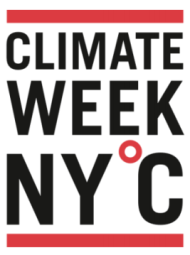by Moneen Nasmith
Energy efficiency measures provide tremendous opportunities for achieving effective and cost-friendly reductions in the emissions of greenhouse gases. In the absence of more comprehensive legislative efforts, proponents of energy efficiency projects can look to existing environmental laws for tools to promote and encourage energy efficiency and conservation. One such law is the federal Clean Air Act (“CAA”), which empowers the U.S. Environmental Protection Agency (“EPA”) to use a variety of mechanisms to address air pollution and protect the public health.
A new white paper by CCCL examines the myriad ways that the CAA can be used to promote energy efficiency. One of the chief components of the CAA is the setting of National Ambient Air Quality Standards (“NAAQS”) for non-hazardous pollutants, which are set by EPA but generally implemented by the adoption of implementation plans by each state. These state implementation plans (“SIPs”) can include energy efficiency programs so long as they provide quantifiable, additional, enforceable, and permanent reductions of emissions of the pollutant being regulated. There also is the possibility of including emerging or voluntary energy efficiency measures in SIPs. Advocates who wish to promote these types of efforts can participate in the official comment period on the SIP at the state level, as well as the official comment period on EPA’s review of the SIP at the federal level.
The CAA also establishes permitting programs, each of which can provide a mechanism for including energy efficiency measures. These include extensive permitting requirements for new stationary sources of air pollution. Many of these permits require the imposition of different technology-based standards on permitted sources. Considerations of energy efficiency can play a critical role in determining what precise amount of emissions control technology a new source will be required to adopt to receive a permit. In some cases, offsetting emissions from energy efficiency projects also can be incorporated as permit conditions. As each permit is considered, advocates of energy efficiency measures can become involved by providing comments on the permit conditions and potentially challenging a permit that is insufficiently stringent.
In addition, the CAA uses technology-based standards that apply to specific categories of sources. As with the individual permits, there are opportunities to include energy efficiency measures as part of the conditions covered source categories must meet to undertake new construction, modification, or reconstruction. There also is significant potential for including energy efficiency programs as part of performance standards for existing sources if EPA amends the guidelines that currently establish the recommended standard of performance for existing sources in particular categories.
CCCL’s new white paper, written by visiting fellow Moneen Nasmith, describes in greater detail how advocates can participate in various actions under the CAA, as well as challenge final agency decisions that reflect insufficient consideration of the issue of energy efficiency and conservation. Proponents of energy efficiency projects who wish to take full advantage of the opportunities presented by the CAA also must pay close attention to state and federal environmental agency notices to ensure that they are aware of CAA developments that could provide these openings.


